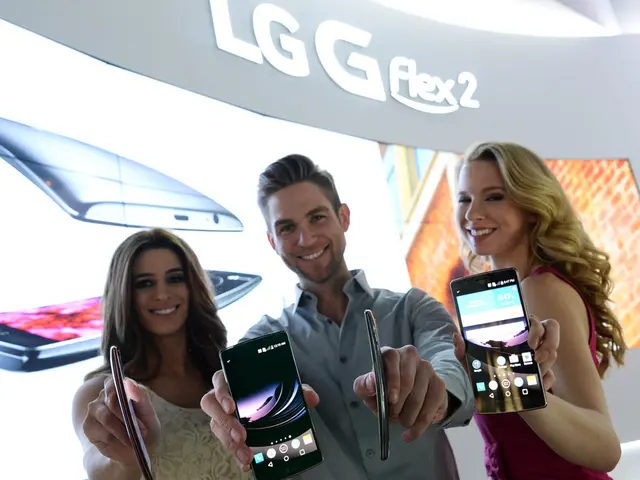"ISO 15118-20 and Vehicle-to-Grid (V2G) charging: an examination of each key component"
The automotive industry is taking a significant step forward in the realm of electric vehicle (EV) charging, with Porsche leading the way by offering Plug-and-Charge technology in their Taycan models at Ionity fast chargers. Audi, Mercedes, and VW are following suit, signaling a promising future for this innovative charging solution.
At the heart of this revolution is ISO 15118-20, a standard that supports bidirectional power transfer, wireless charging, and automatic connection systems. This standard enables Vehicle-to-Grid (V2G) capability, allowing vehicles to supply energy during peak demand, contributing significantly to the energy grid.
For Plug-and-Charge to work seamlessly, various components must function harmoniously. This includes the car, charging pole, certificate infrastructure, and backend systems. However, interoperability remains a challenge due to differences in TLS versions, increased certificate sizes, delayed firmware updates, and a lack of common field testing procedures.
Europe is making strides in overcoming these challenges, with regulatory requirements like AFIR mandating new charging stations to be equipped with ISO 15118-20 from 2027 onwards. This standard formalizes and technically enables Plug-and-Charge, using Power-Line Communication (PLC) for the physical connection and providing IPv6-based data transport.
The PKI infrastructure required for secure communication between vehicle and charging pole is not a single manufacturer's responsibility but rather the PKI protocol defined by SAE International. This standard, based on ISO 15118, is implemented industry-wide by automakers and charging operators.
Fleet operators stand to benefit from dynamic charging schedules, which can save costs and simplify operations. Implementing ISO 15118-20 requires technical integration, organizational, and legal steps, including extensive testing of charging poles and cars for interoperability.
The increasing number of EVs is making the interplay between vehicles, energy supply, and charging processes more relevant. In the future, it's conceivable that vehicles could function as a power source in a smart home if the grid goes down or the electricity price is high.
A reliable network can be created only if OEMs, charging infrastructure operators, and backend services collaborate sustainably. Roaming hubs are growing in importance as they enable cross-border authorization, billing, and central management of certificate pools.
The Plug-and-Charge scenario aims to make EV charging so intuitive that it happens incidentally. ISO 15118-20 requires a robust PKI that issues, manages, and regularly renews certificates to make Plug-and-Charge work.
ISO 15118-20 provides the technical foundation for comfortable and scalable charging, but standardization alone is not enough. It requires active implementation, ongoing maintenance of interfaces, and a grown trust across the entire charging infrastructure.
Several vehicle manufacturers and network operators in Europe have integrated or are conducting field tests on Plug-and-Charge. TLS encryption protects the connection and ensures integrity and confidentiality in ISO 15118-20. The system could integrate decentralized energy systems, such as solar panels in parking lots or home energy storage.
Ionity launched Plug-and-Charge in 2021, and Aral Pulse followed in spring 2022. Electrify America in the USA is preparing ISO 15118 support. In ISO 15118-20, multiple contract certificates per session are allowed instead of just one, providing flexibility in managing charging sessions.
Renault, Hyundai, and Sono Motors are testing bidirectional charging, and research projects in the Netherlands and Switzerland are testing the practicality of V2G. TLS 1.3 with modern cipher suites is mandatory in ISO 15118-20, providing more robust security.
As the EV market continues to grow, the potential benefits of Plug-and-Charge technology become increasingly apparent. With collaboration and standardization, we are one step closer to a future where EV charging is as simple as plugging in and charging up.








